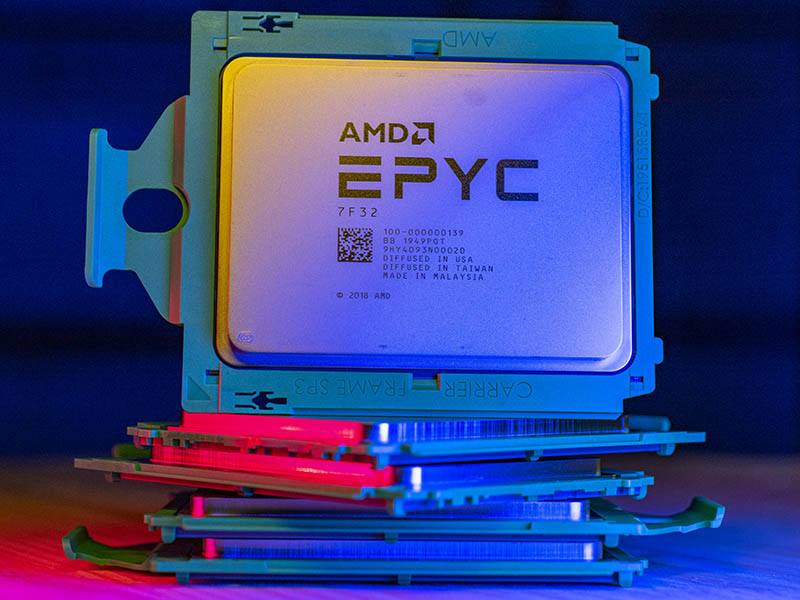Hirdetés
- M.2 csatlakozók terén (is) jónak ígérkezik az MSI közelgő AMD-s alaplapja
- Kivégezheti a kisebb VGA-gyártókat az NVIDIA döntése
- Szinte a semmiből robbanna be az 1,4 nm-es eljárásával a Rapidus
- Félszáz terabájtos HDD-k előtt nyitotta ki az ajtót a Seagate
- Lassú lett a Windowsod? Ezeket kapcsold ki elsőnek!
- AMD vs. INTEL vs. NVIDIA
- AMD Navi Radeon™ RX 9xxx sorozat
- TCL LCD és LED TV-k
- Lassú lett a Windowsod? Ezeket kapcsold ki elsőnek!
- Milyen házat vegyek?
- Milyen TV-t vegyek?
- AMD K6-III, és minden ami RETRO - Oldschool tuning
- Fejhallgató erősítő és DAC topik
- Projektor topic
- Kormányok / autós szimulátorok topikja
Új hozzászólás Aktív témák
-

S_x96x_S
addikt
újabb teszt:
AMD EPYC 7F32 Benchmarks and Review 8 Optimized Cores
https://www.servethehome.com/amd-epyc-7f32-benchmarks-and-review/Patrick megjegyzése : a szoftverlicenszek, frissítési ciklusok és a gazdasági helyzet bekavar ..
A note from the Editor:
The elephant in the room is that the per-core license server market is tough. Organizations that use this type of software tend to also be enterprises that have standardized on certain server models. For example, the Dell EMC PowerEdge R740(xd.) As a result, the same servers organizations have purchased for years can also use the Gold 6250. From an operational standpoint, there is no need to change. This is one of the biggest inhibitors to AMD adoption but one that is rarely discussed in reviews that focus on the chips or individual servers themselves.
While John has shown that the AMD EPYC 7F32 is a great platform, the organizations purchasing this are not the same ones that are buying the lowest-cost servers that run all open-source software. What this does represent is AMD showing it can offer a more full-stack solution. For those organizations looking at economic constraints for the next cycle or cycle and a half, one can purchase Rome servers today, and run the same servers through 2020/ 2021 with Milan (EPYC 7003) instead of making a jump to shorter-lived Cooper Lake Intel Xeon Platforms or Ice Lake “Whitley” platforms later in 2020/ 2021.
Refresh cycles and planning have a major impact on the market that we see the EPYC 7F32 play in. While the product itself may be great, there are structural inhibitors to EPYC adoption thus far. We also suggest that our readers think about the 2020-2021 planning cycle in the context of companies looking to increase EBITDA by limiting IT spend. Saving thousands on servers and software licenses can help hit numbers and keep the IT team employed during a downturn. /Patrick
Új hozzászólás Aktív témák
- exHWSW - Értünk mindenhez IS
- AMD vs. INTEL vs. NVIDIA
- GoodSpeed: Márkaváltás sok-sok év után
- AMD Navi Radeon™ RX 9xxx sorozat
- TCL LCD és LED TV-k
- Lassú lett a Windowsod? Ezeket kapcsold ki elsőnek!
- Autós topik
- Milyen házat vegyek?
- Milyen TV-t vegyek?
- AMD K6-III, és minden ami RETRO - Oldschool tuning
- További aktív témák...
- MacSzerez.com - 2017 MacBook Air 13" / i5 1.8GHz / 8GB RAM / Választható SSD méret! / Garancia!
- MacSzerez.com / iPad Air M2 11" / 6. generáció / Wifi / 128GB / Asztro / Garancia!
- Victus fb3804no 15.6" FHD IPS Ryzen 5 8645HS RTX 4050 16GB 512GB NVMe gar
- MacSzerez.com - 2020 MacBook Air 13" Retina M1 / 16GB RAM / 256GB SSD / Asztroszürke / Garancia
- Kingston FURY 32GB DDR5 5600MHz CL40 - Beast Black - 1x32GB - 99 hó garancia - ÚJ! Bontatlan!
- Panasonic HC-V770 FUL HD kamera
- Telefon felvásárlás!! iPhone 13 Mini/iPhone 13/iPhone 13 Pro/iPhone 13 Pro Max
- Lenovo ThinkPad T14S Gen1 Intel i5-10310U Refurbished - Garancia
- Panasonic CF-20 ütésálló, ipari notebook & tablet számlával, garanciával
- Samsung Galaxy Z Flip 5 512GB, Kártyafüggetlen, 1 Év Garanciával
Állásajánlatok
Cég: BroadBit Hungary Kft.
Város: Budakeszi
Cég: PCMENTOR SZERVIZ KFT.
Város: Budapest



